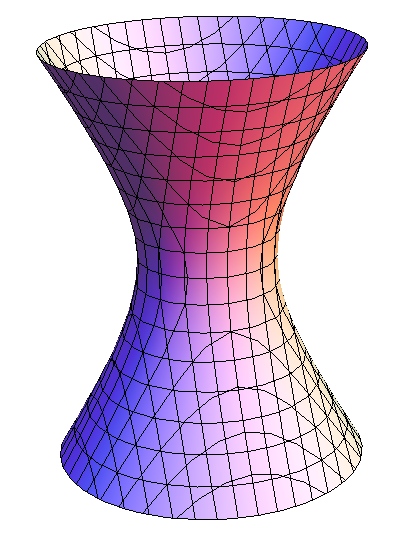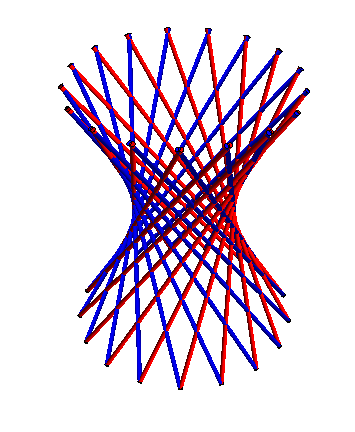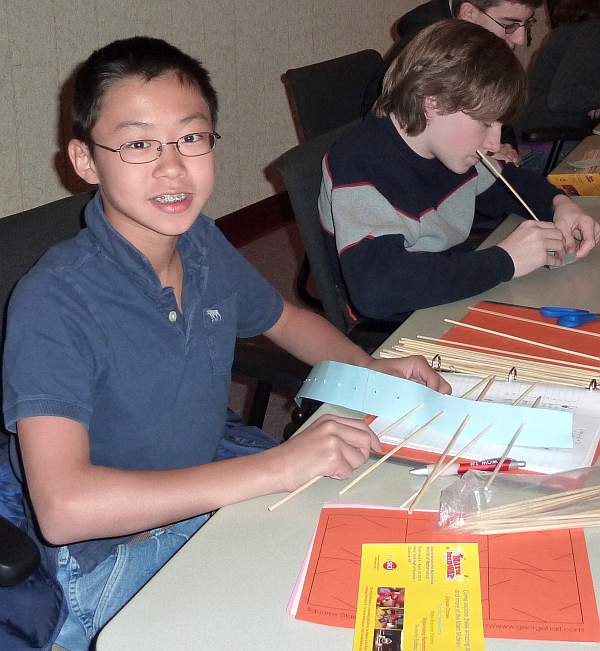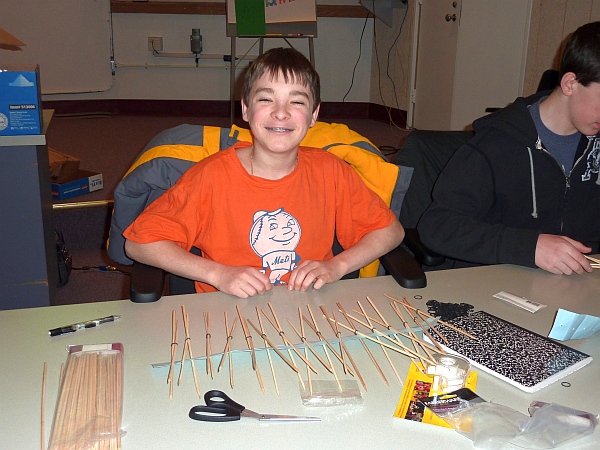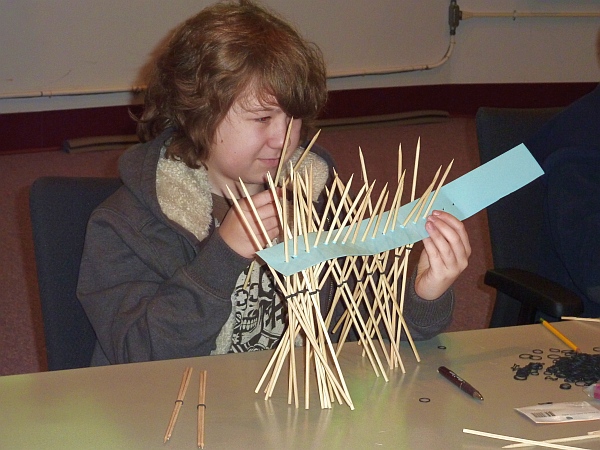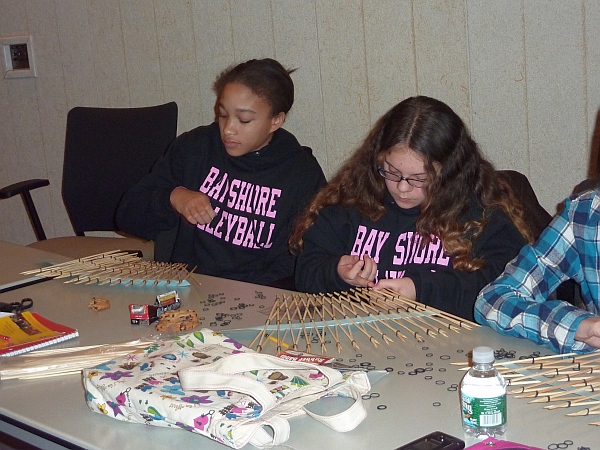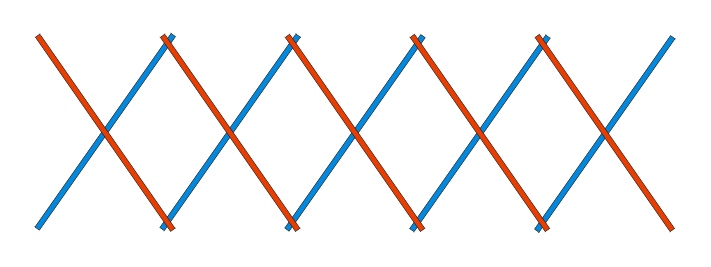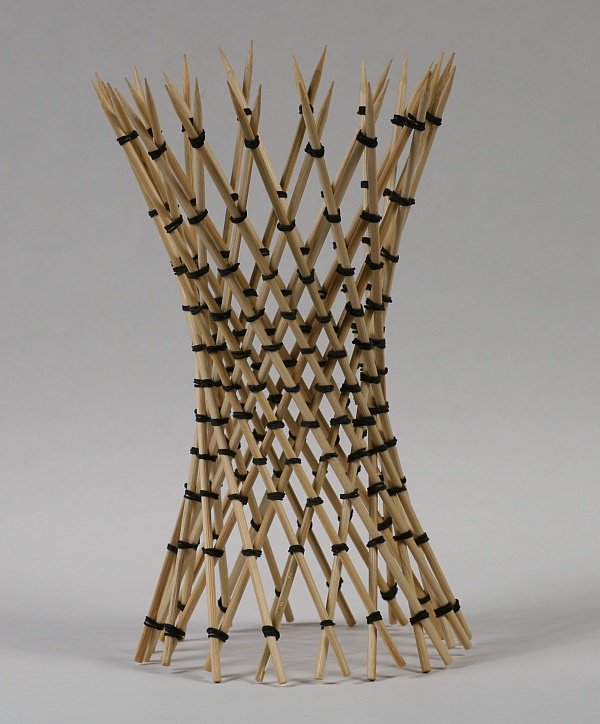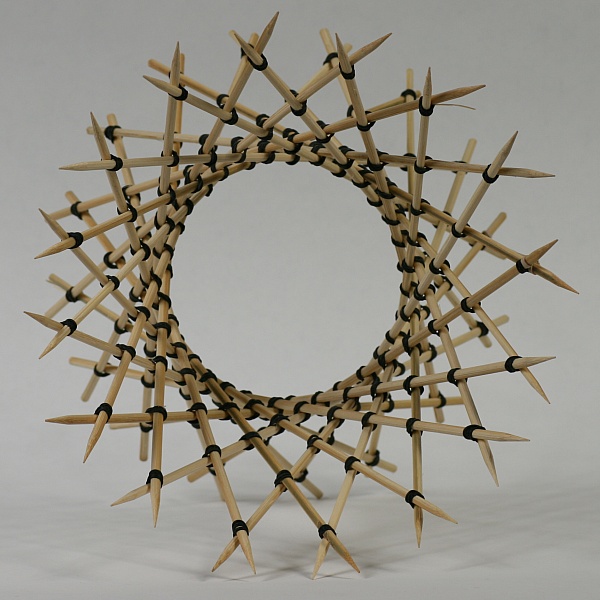Now think of the red and blue pattern
above, but keep it flat, not "cylindrical," for the moment.
Systematically tilt all the skewers that go through the paper one way
(the red family) and tilt the others (the blue family) the other way.
Be sure the red ones are always on top of (or always below) the blue
ones. (Which way you tilt each family and which family is on top
doesn't matter, as long as you pick a pattern and stick with it.)
Add rubber bands along the tops where each skewer crosses its
neighbor. Also add rubber bands along the bottoms where each
crosses its neighbor from the other side. Make three nice,
straight rows of rubber bands.
After three rows of rubber bands, slide the end rubber bands closer to
the center row, to make a larger tilt angle, which adds more crossings.
Add a fourth row of rubber bands that holds this next crossing.
At this point the paper can be ripped away and you will have a nice
"accordion" band that opens and closes in an amusing way. Check all
your reds are on top and all your blues are on the bottom. If you have
an over-and-under weave like a basket, the skewers can not
be in straight lines, so remove rubber bands as necessary, cross the
skewers properly, and reconnect them so one family of skewers is always
outside and the other family is always inside.
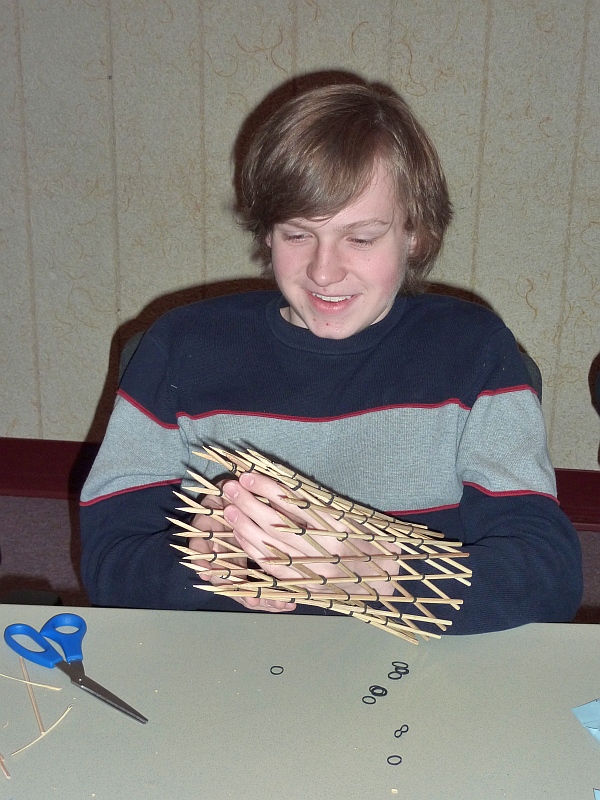
Wrap your band into a cylinder form, and
rubber band the connections that go from one end to the other.
Again, be very careful that the "red" ones are always outside of the
"blue" ones.

You should find that it springs open
and closed nicely.
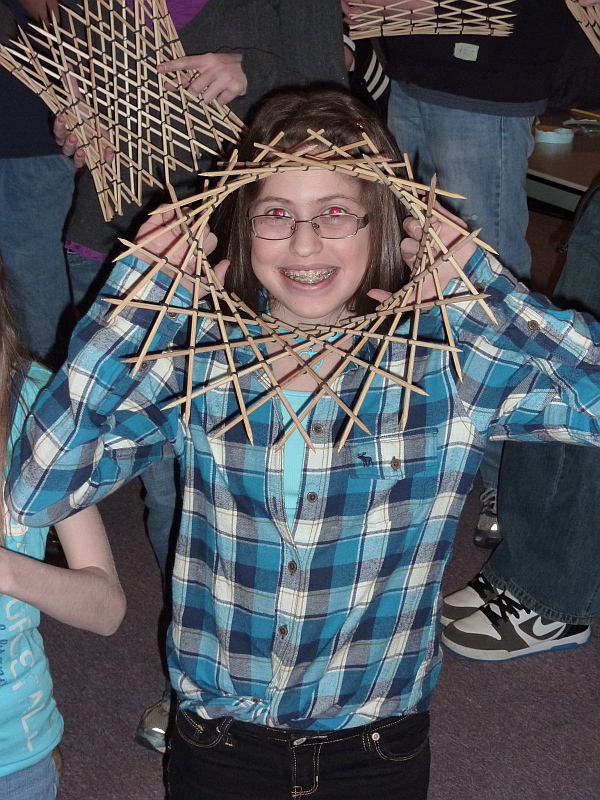
It will naturally spring into a
circular cross-section.


